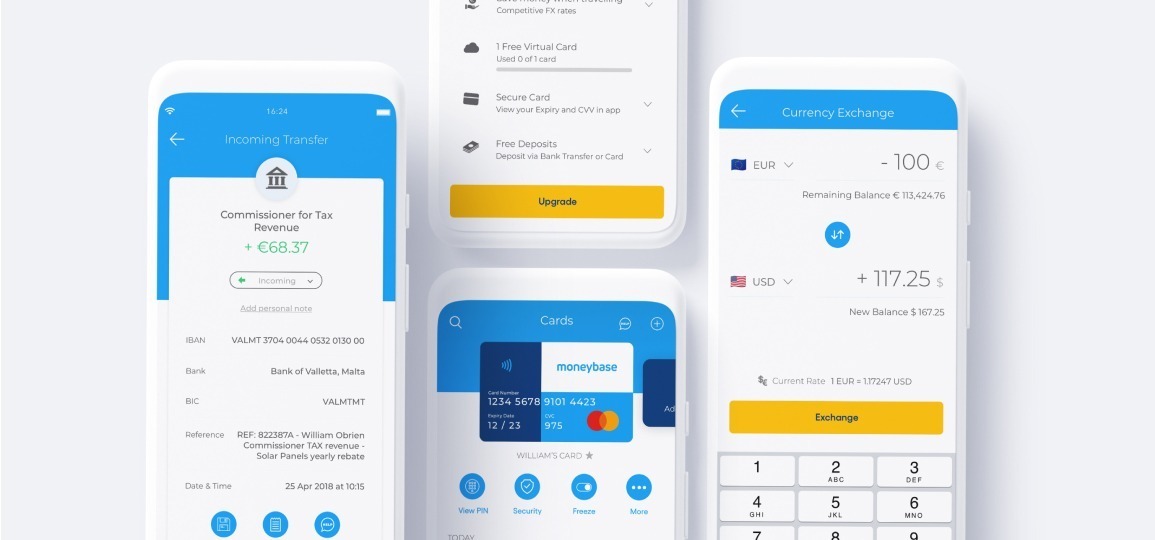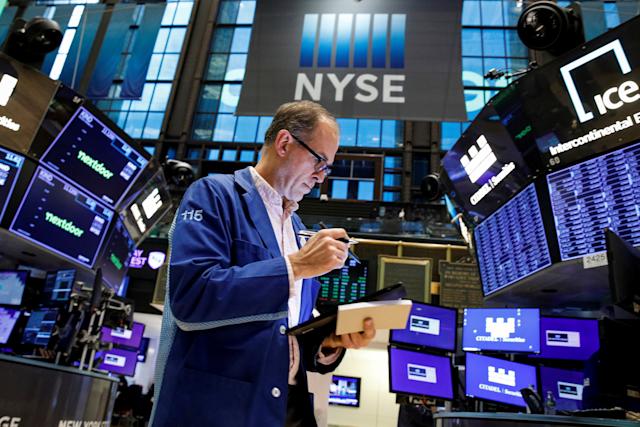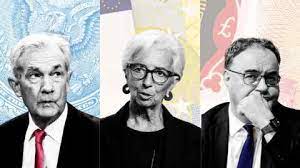One of the so-called traditional ‘Big Four’ Irish banks and historically the premier banking organisation in the country with a unique position in the Irish banking history, the Bank of Ireland is a commercial bank and one of the oldest ones in operation. A Forbes Global 2000 company, at the core of the modern-day Group is the bygone institution established by Royal Charter.
After dealing a harsh blow following the 2008 global financial crisis and the COVID-19 pandemic, the bank is on the road to recovery, maintaining the top spot as the country’s largest bank by assets with a loan book of €77 billion. With major acquisitions in the pipeline, a 17% increase in its operating profit according to its latest financial results and the potential to take on neobanks with its very own instant money-transfer app, all eyes are on Bank of Ireland.

A brief history of Bank of Ireland
Bank of Ireland was established in 1781 after the Bank of Ireland Act was passed by the Irish parliament. As a result, the bank opened its doors for the first time in 1783 at Mary’s Abbey in a private house and remained there until 1808, eventually moving to College Green. By 1827, the business already boasted seven branches across the country, namely in Cork, Waterford, Clonmel, Newry, Belfast, Londonderry and Westport and by 1883, its branch network grew to 58.
Decades later, the Bank of Ireland Group as it is known today was formed in the 1960s when the then National Bank of Ireland, Hibernian and Bank of Ireland merged to form the Group. At the same time, it established the Investment Bank of Ireland, while in the 1980s, it opened the first ATM at a time when automated teller machines were unheard of in the country.
The Group has cemented its position in the Irish banking system by way of numerous acquisitions. For instance, in 1996, it bought the Bristol and West building society for £600 million, while in 1997 it purchased New Ireland Assurance plc. More recently, in 2000 the Group acquired Chase de Vere, whilst two years later it bought a 61% stake in Iridian Asset Management, a U.S. investment manager, which doubled the size of its asset management business.
In 2008, at the height of the financial crisis, Moody’s Investors Service changed the bank’s rating from stable to negative, after identifying its weakening asset quality and the impact the economic environment at the time would have on its profitability. In effect, in March of 2009, shares reached €0.12 during the day, reducing the company’s value by over 99% from its 2007 high. Since then, the bank has managed to turn things around, despite the current impact brought about by the COVID-19 pandemic.
Today, the Group provides a broad range of financial services both locally, as well as internationally. It operates through five segments, namely Retail Ireland, Bank of Ireland Life, Retail UK, Corporate and Treasure, as well as Group Centre. More specifically, in the Republic of Ireland, it services personal, commercial, industrial and agricultural sectors, offering products and services that include mortgages, credit cards, savings, personal loans, current accounts, foreign exchange services, prepaid cash and business banking. On the other hand, its international operations consist of providing financial services for the British Post Office throughout the UK, with the bank having expanded largely through the takeover of the Bristol and West Building Society, while it also operates in Northern Ireland, where it prints its own banknotes in pounds sterling. What’s more, its international operations elsewhere are mainly undertaken by Bank of Ireland Corporate Banking, which provides services in countries such as Spain, Germany, France and the U.S.
Fun fact
With the exception of the years 1950, 1966, 1970 and 1976, during which the bank had to close its doors due to bank strikes, Bank of Ireland is the oldest bank in continuous operation in the country.

When did the Bank of Ireland go public?
Bank of Ireland has a primary listing on the Irish Stock Exchange (ISE) and a premium listing on the London Stock Exchange (LSE). In 2017, the Group unveiled its plan for a 30-to-1 share consolidation plan as it sought a corporate reorganisation to comply with European regulations, which were designed to minimise taxpayer bailouts in the event of another financial crisis. The reverse split shrank the bank’s number of outstanding shares by 97%, yet it consolidated its capital structure and lifted its share price from a trading level of €0.23 to around €7 at the time. Its share price closed up 2c to €7.40 on its first day of trading under its new organisational structure.
Up until 2020, the bank was a regular dividend payer, however, in line with recommendations from the European Central Bank (ECB), just like its counterparts, Bank of Ireland scrapped plans to pay shareholder dividends at the height to the COVID-19 pandemic. Then, a year following the March 2020 pandemic lows, Bank of Ireland’s shares rose after it reported better than expected 2020 results, while its executives signalled that they plan to launch a share buyback programme next year for the first time in almost two decades. Indeed, the last time the Group was in the market buying back its own shares was in early 2004. At the same time, it stated that it’s also looking to reinstate its dividend payout in 2022.
Is the Bank of Ireland a buy?
Without a doubt, the COVID-19 pandemic brought on several challenges, with the company marking a loss of €669 million before tax in the first six months of 2020, although the full year loss was ultimately approximately half that as lending and income recovered in the second half of the year. Bank of Ireland managed to bounce back to 2019 levels as it put disruptions by the pandemic firmly behind it in the first half of 2021, recording €465 million profit for the period. In addition, despite its main Irish market being in its third and longest lockdown for much of the year’s first six months, Bank of Ireland managed to set aside €1 million to cover possible loan defaults compared to the €937 million in the first half of 2020. Meanwhile, by June of 2021, its stock was up 31% for the year, however, it is still recuperating some ground from its 2018 highs, currently trading at €5.15 per share as of November 4, 2021.
On October 11, the Group announced that it is putting dozens of its closed branches up for sale. The move comes after it announced that it is reducing the number of its branches in the country to 169 from 257 in what it called the most significant change in its physical footprint in almost a decade. And while news of the Group’s closure of some of its branches such as those in Ballymote, Tubbercurry, Manorhamilton and Charlestown were met with much doom and gloom, Bank of Ireland sought another avenue to leverage the impact by forging a new agreement on services with AN Post. The partnership will enable Bank of Ireland customers to carry out banking services at local post offices in communities across the country and already a range of its local banking services are now live at 923 post office locations around the island.
And just this month, the Group reported a 17% increase in operating profit up to the end of September compared to the same period in 2019, pre-COVID, thanks to a continued recovery of business activity on the back of a more positive economic environment and outlook. According to the company, customer loan volumes were stable at €76.7 billion at the end of September, while new lending increased 7% in the nine-month period compared to the same period in 2020. Its positive performance is mainly attributed to higher income, lower costs and an increase in capital.
Analysts at Davy Stockbrokers, which Bank of Ireland will acquire by 2022, announced that it would likely upgrade its full year forecast for the bank thanks to its better-than-expected results and improved outlook.

What’s next for the Bank of Ireland?
So far in 2021, the Group has made some notable acquisitions, with two major deals in the works, one with KBC Bank of Ireland and the other with Davy Stockbrokers, both of which are set to complete in 2022 and are expected to boost the Group’s business growth strategy and transform it financially. The acquisitions also support Bank of Ireland’s target of delivering a ROTE (return on tangible equity) in excess of 10% in the medium term.
The KBC Bank of Ireland deal will see Bank of Ireland purchasing practically all of the former’s Irish performing assets for €5 billion as the Belgian financial group is leaving the Irish market. This means that Bank of Ireland will purchase around €8.8 billion of performing mortgages, €100 million of performing commercial and consumer loans, as well as €4.4 billion of deposits. At the same time, the Group will also acquire around €300 million of non-performing mortgages.
In the past year, Ireland’s banking landscape has undergone drastic changes. Both KBC and NatWest-owned Ulster Bank are shutting down operations and making an exit from the country. And while some have sounded the alarm bells about the state of banking competition in the country, these exits are set to strengthen Bank of Ireland’s position, leaving it with two primary rivals – Allied Irish Banks (AIBG) and Permanent TSB.
Meanwhile, the group has to contend with rising competition from fintech upstarts like Revolut and N26, which each boast around 1.3 million and 200,000 users respectively in Ireland. Yet, it appears to have a plan to take on these neo banks. According to reports, earlier in January of this year, the Group together with other Irish banks joined forces to set up an instant money-transfer app, dubbed Synch Payments. Although the project itself recently hit a stumbling block when the Competition and Consumer Protection Commission (CCPC) pushed back the application due to insufficient information, this joint venture underscores how traditional Irish banks like Bank of Ireland are striving to stay ahead of the curve and adopt the technology in place to join the Single European Payment Area (SEPA) instant payment system. Synch Payments is set to create a new industry-wide open payment service in the country that could be used, subject to the joint venture licensing terms, by all financial institutions that issue Euro-denominated IBANs to Irish customers.
How to invest in Bank of Ireland (BIRG) with Moneybase Invest
Ready to invest in the Bank of Ireland (BIRG)? Your first step to tapping into a world of investment opportunities with Moneybase Invest is to sign up and open an account.
To do so:
- Download the app from either Google Play or the Apple App Store. Alternatively, you may access Moneybase Invest on your desktop by visiting https://live.cctrader.com/
- Once you’ve onboarded successfully and have funded your account, head over to the search bar at the top of your screen and input either the company name or ticker symbol.
- Select the instrument of your choice from the list and then click on the Buy button on the window located at the bottom of your screen.
- On the New Order page, input the number of shares you would like to purchase and hit the Place Buy Order. The stock has been added to your portfolio.
Access over 20,000 Stocks, ETFs, Bonds & Funds and over 4,300 fractional US shares and ETFs on our award-winning platform, with no hidden fees and instant market execution.
Moneybase Invest is brought to you by Calamatta Cuschieri Investment Services Ltd and is licensed to conduct investment services business by the MFSA under the Investment Services Act.
Moneybase Invest offers direct market access and speed of execution and is intended for knowledgeable and experienced individuals taking their own investment decisions. The value of investments may go up and down and currency fluctuations may also affect investment performance.
The contents of this article are not intended to be taken as a personal recommendation to invest but strictly based on research and for information purposes only. Retail investors should contact their financial adviser for a suitability assessment prior to taking any investment decisions.





